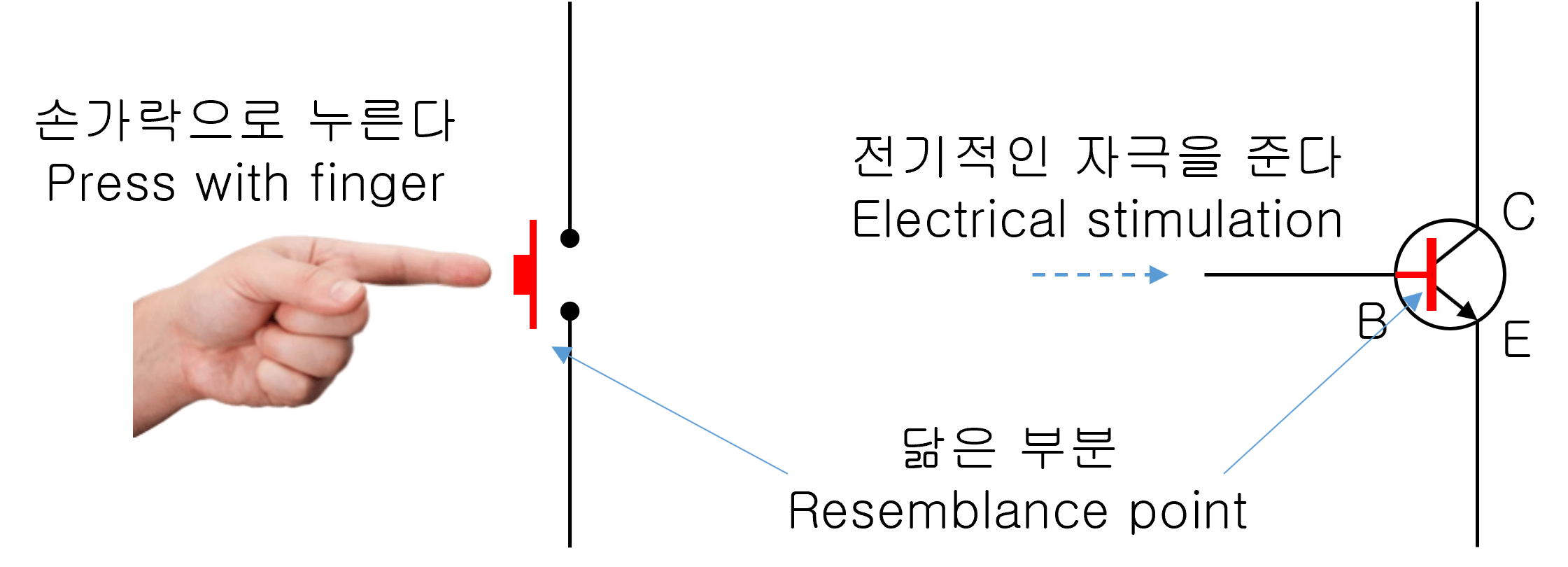Transistor
There are so many switches inside your computer that you can’t imagine. It’s not the hand-pressed switch we’ve been seeing. It is a switch operated by an electrical signal. The computer counts ‘1’ and ‘0’ according to the voltage level. When the voltage is high, it is ‘1’, and when the voltage is low, it is ‘0’. Computers basically do binary calculations. When the computer adds and subtracts numbers, the electrical signals of ‘1’ and ‘0’ act as switches for the ‘logical circuit’. At the heart of this switch is a transistor.

Transistors are the fundamental components of computer logic circuits. Transistors operate as if the switch is closed (connected) when a voltage exceeding a certain voltage (approximately 0.6~0.7V) is applied.
Transistor structure
Most transistors have three legs. They are called Base, Collector, and Emitter, respectively.
- Base(B): A terminal that applies a weak electric signal to operate the transistor.
- Collector(C): When a weak electric signal comes in from the base (B), a large current flows through the blocked collector (C).
- Emitter(E): This is the terminal where the current flowing from the base (B) and the collector (C) is combined.
Transistor switching action

Transistors act like switches. However, it is not a switch that is pressed by hand. Instead, the switch acts automatically according to electrical signals and other physical environments.
For most transistors, applying a voltage of about 0.6~0.7V or more to the base (B) has the same effect as closing the switch.

An example of a circuit that turns on an LED by pressing a switch, in a typical switch, just press the switch with your finger to turn on the LED. Transistor LED turns on when a voltage of 0.6~0.7V or more is applied to the base (B).